Water & Energy
Emulsifying Two Great Challenges in Four Parts
August 11, 13, 18, and 20 in 2020
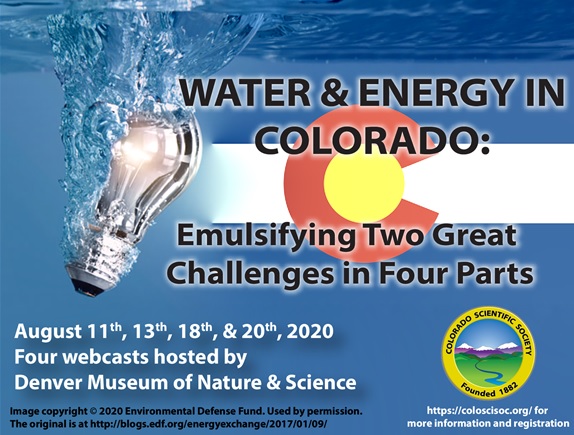
Coloradans are faced with limited and perhaps dwindling water supplies at the same time we strive to produce more energy in an environmentally sensitive manner. These critical challenges are fundamentally science and engineering problems that interface with social and communication components. Hydrological knowledge can frame technical solutions for water such as aquifer storage and recovery, enhanced recycling, and more efficient use. Engineering solutions can draw on innovative energy technologies that provide economically optimized blends of environmentally sensitive power-generating technologies. Together, informed decisions can result in a better Colorado for everyone.
The Colorado Scientific Society, in collaboration with the Center of the American West, sponsored a symposium focused on the science and cultural issues at the interface between water and energy in Colorado. This symposium brought together representatives from water providers and the energy industry to highlight some of the most important issues facing our community today and in the future. We held a four-day remote event hosted by the Denver Museum of Nature & Science. Each hour-and-a-half session featured four to five speakers engaged in discussions coordinated by Dr. Patricia Limerick as moderator. The emphasis centered on the science that frames these topics, but also incorporated cultural contexts and identified common ground and collaborative opportunities.
The Denver Museum of Nature and Science (DMNS) hosted the Water & Energy virtual sessions, providing the Zoom infrastructure and a facilitator for each session. DMNS recorded each session and posted the recordings on YouTube. A link to the recording follows details about each session below.
DISCLAIMER & FAIR-USE STATEMENT: The following Zoom-symposium recordings contain content that expresses the opinions, viewpoints, and conclusions of the speakers and does not necessarily reflect the views, policies, or endorsements of the Colorado Scientific Society. This recording is made available to the public for general information and educational purposes only and is not intended to be used for profit. Any use of copyrighted material included therein for other purposes must obtain express written permission from the author.
Water & Energy Sessions, Topics, and Recordings
The four sessions focused on the following topics:
Click on the images of the participants below to see their biographies and statements.
- Part I: RESOURCE PROVIDERS: Tuesday, August 11, 2020 (10:00 –11:30 am)
See the recording of Water & Energy, session I on YouTube.
Note: The “transcript” is automatically generated and is sometimes inaccurate about both the speaker and the content of what they said. Just watch the video.
- PART II: USER COMMUNITY PERSPECTIVES: Thursday, August 13, 2020 (10:00 –11:30 am)
See the recording of Water & Energy, session II on YouTube.
Note: The “transcript” is automatically generated and is sometimes inaccurate about both the speaker and the content of what they said. Just watch the video.
- PART III: TECHNOLOGY ADDRESSING CURRENT CHALLENGES: Tuesday, August 18, 2020 (10:00 –11:30 am)
See the recording of Water & Energy in Colorado, session III on YouTube.
Note: The “transcript” is automatically generated and is sometimes inaccurate about both the speaker and the content of what they said. Just watch the video.
- PART IV: FUTURE PATHWAYS: Thursday, August 20, 2020 (10:00 –11:30 am)
See the recording of Water & Energy in Colorado, session IV on YouTube.
Note: The “transcript” is automatically generated and is sometimes inaccurate about both the speaker and the content of what they said. Just watch the video.
Additional Information about the Water & Energy Symposium:
Water & Energy Symposium; Biographies of Speakers and Panelists
Water & Energy Program; Statements by Panelists
Water & Energy; Organizations Involved
Water & Energy Symposium Participants
=
Dr. Patty Limerick
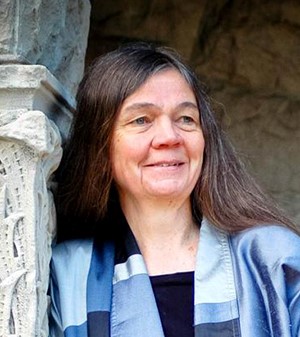
Dr. Patty Limerick is the Faculty Director and Chair of the Board of the Center of the American West at the University of Colorado, where she is also a Professor of History. Patty has dedicated her career to bridging the gap between academics and the general public and to demonstrating the benefits of applying historical perspective to contemporary dilemmas and conflicts. Patty was appointed the Colorado State Historian in 2016 and served until 2018. In 2016, she was also appointed to the National Endowment for the Humanities advisory board, the National Council on the Humanities where she served until October 2019. Patty received her BA from UC Santa Cruz in 1972 and her Ph.D. in American Studies from Yale University in 1980. She started her academic career in 1980 as an Assistant Professor of History at Harvard. In 1984, Patty moved to Boulder to join the History Department of the University of Colorado, where she became Full Professor in 1991. Patty has published several books including Desert Passages (1985), The Legacy of Conquest, (1987), and A Ditch in Time: The City, the West, and Water (2012). She is also a prolific essayist, and many of her most notable articles were collected in 2000 under the title Something in the Soil. Patty’s awards and honors are numerous and include a MacArthur Fellowship (1995 to 2000) and the Hazel Barnes Prize (2001). She has served as president of several professional organizations, advised documentary and film projects, and done two tours as a Pulitzer Nonfiction jurist, as well as chairing the 2011 Pulitzer jury in History. She regularly engages the public on the op-ed pages of local and national newspapers and currently writes a monthly column for The Denver Post.
Visit Patty’s page at the Center of the American West, about Patty
=
Part I: Resource Providers:
Tuesday, August 11, 2020 (10:00 –11:30 am)
=
Laurna Kaatz
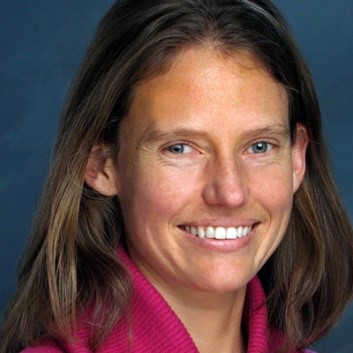
Laurna Kaatz is the climate science, policy, and adaptation program director for Denver Water. Her primary responsibility is to lead climate investigations and implement findings to inform planning, policy, and research. Laurna’s work incorporates many areas of water resource planning, including climate and drought planning, operational and water rights analysis, and long-range integrated resource planning. As incoming Chair of the Water Utility Climate Alliance, lead practitioner of the Decision Making under Deep Uncertainty Society, and Past President of AWRA CO Section, Laurna is extensively engaged in climate preparedness and resilience. Before her career at Denver Water, Laurna was a Professor of Physics at Sweet Briar College, and then went on to work as a climate science researcher with Aurora Water. Laurna has a master’s degree in physics and a Bachelor’s in physics and mathematics, and is currently working on her PhD.
I-1: Providing Drinking water to Colorado
Water in the west is a complex and convoluted issue. Wise and thoughtful planning is needed to balance the various needs of users and to ensure a secure water future. Meeting future water needs must be done in a manner that considers all solutions and fosters resilient thinking and investments. In this presentation you will hear about the challenges of providing drinking water in a rapidly growing semiarid region and how Denver Water, the largest and oldest water utility in the State of Colorado, is preparing to provide safe, high quality, and reliable drinking water continuously into the future.
=
Jeff Lyng

Jeff Lyng is the Director of Energy & Environmental Policy at Xcel Energy, serving electricity and natural gas customers in eight states. He is responsible for developing strategy and policies that will continue the company’s leadership in the clean energy transition while keeping customer bills low. Prior to joining Xcel Energy, Jeff was a Senior Policy Advisor with the Center for the New Energy Economy at Colorado State University where he worked with states to develop clean energy policies and programs. He also served as the Renewable Energy Policy Manager in former Colorado Governor Bill Ritter’s Energy Office. Jeff earned his master’s degree in Building Systems Engineering from the University of Colorado where he studied solar energy in the production home market. Jeff has served on the boards of Xcel Energy’s Innovative Clean Technologies Program, the Colorado Energy Services Coalition, the Colorado Renewable Energy Society and is a past Board Chair of the American Solar Energy Society.
I-2: Building a Carbon-Free Future
Xcel Energy is the first major U.S. power company to announce a vision to deliver 100% carbon-free electricity by 2050 and a goal to reduce emissions 80% by 2030 from 2005 levels. The transition to clean energy is well underway with the Colorado Energy Plan, which state regulators approved in 2018. Greater deployment of renewable energy means less consumptive water use and, to date, Xcel Energy company-wide has reduced water consumption from electricity production 23% with greater savings expected as the transition continues. Importantly, achieving a carbon-free future demands new forms of 24/7, carbon-free generation, which the company is working to enable
=
Eric Kuhn

Eric Kuhn is the former General Manager of the Colorado River District, a position he held for more than 20 years. He earned his BS in Engineering from the University of New Mexico and an MS in Business Administration from Pepperdine University. Early in his career, he worked as a Naval engineer officer aboard nuclear submarines and as a nuclear start-up engineer for Bechtel Power Corp. After joining the Colorado River District in 1981 as Assistant Secretary-Engineer, he served on the Engineering Advisory Committee of the Upper Colorado River Compact Commission and the Colorado Water Conservation Board representing the Colorado River mainstem. Eric was appointed by Governor Bill Owens as an at-large representative on the Colorado Interbasin Compact Committee. Since retiring in 2018, Eric has written a book titled “Science Be Dammed: How Ignoring Inconvenient Science Drained the Colorado River,” which is an alarming reminder of the high stakes in the management-and perils in the mismanagement-of water in the western United States.
I-3: West-Slope Water Use, Trends, and Issues in the Age of Climate Change
Water use on Colorado’s Western Slope began in the late-1800s with the construction of numerous small ditches and reservoirs that served bottomlands by gravity. By the 1920s most of these lands were under cultivation. In the 1950s development accelerated because of the construction of large new transmountain diversions, federally subsidized irrigation projects, and large coal-fired power plants. By the mid-1980s, water use again plateaued, but dreams of new big projects remain. Today, we understand that the warming climate is reducing the water available for all uses and the future of water use on the West Slope is uncertain.
=
Bruce Finley, J.D.

Bruce Finley is a longtime staff reporter for the Denver Post who covers environment-related news: the land, air and water issues around Colorado and the West. Bruce has worked both as a journalist and a lawyer on a variety of issues worldwide; however, he grew up in Colorado and its mountains and has relished the chance to serve its residents. Bruce graduated from Stanford University, then earned masters’ degrees in international relations as a Fulbright scholar in Britain and in journalism at Northwestern University. He went to law school at the University of Denver, earning his Juris Doctor degree in 2012 and joining the Colorado Bar. He has won numerous journalism awards. His international affairs work led to on-site reporting in 40 countries including a stint in Africa, multiple assignments in Iraq, and after the 9/11 attacks, around the Arab world from Pakistan to Yemen.
I-4: Reckoning
Utilities’ mission of tapping nature to ensure availability of water and energy becomes difficult during a population growth and development boom. Factor in societal mandates—the shift away from fossil fuels toward solar and wind, and the protection of nature for the future—and the challenges intensify. Impacts of climate change from burning fossil fuels —rising temperatures, earlier snow melt, and extreme storms and wildfires—all increase uncertainty to the point that utility planners constantly are working through scenarios. Our extraction and delivery of the resources that nature provides may hit limits. Hard, value-laden questions that have been looming for decades, need to be addressed. To what extent must nature and natural processes survive given the growing numbers of people drawn to Colorado for access to nature? How many people can be crammed into dense, water-and-energy-efficient Front Range cities without triggering an unsustainable exodus that shifts burdens west, urbanizing mountain valleys? Can we co-exist with wildlife? What is the carrying capacity of the arid Southwest?
=
Part II: User Community Perspectives:
Tuesday, August 13, 2020 (10:00 –11:30 am)
=
Jan Kulmann

Jan Kulmann is currently serving as Mayor of Thornton, CO, the Vice Chair of the Rocky Flats Stewardship Council, and member of the North I-25 Coalition. Professionally, Jan is a licensed professional engineer having received a bachelor’s degree in Electrical Engineering from Louisiana State University, along with a minor in music performance, and later an MBA from Colorado State University. Jan has spent her working career in the utility and oil & gas industries in both Texas and Colorado. She spent several years designing infrastructure for local electric utilities in the fast-growing Houston metro area. She coordinated efforts with area builders and developers to safely increase the power supply for residents and businesses. This work has given her valuable experience and knowledge on the requirements necessary for fast growing communities, like Thornton. After moving to Thornton in 2007, Jan brought her leadership skills and technical expertise in both process safety and environmental protection to the oil & gas industry. Jan manages and develops the people, processes and programs that are necessary to ensure operations are conducted safely and with strict environmental protections.
II-1: Where the Need for Water in Communities and Businesses Meet
Growing municipalities need increased amounts of water for both domestic consumption and business sectors. The City of Thornton, located along the Front Range near Denver, has experienced a growth rate over 1000% since its incorporation in 1956 and is now the sixth largest city in Colorado. Thornton is committed to providing dependable and sustainable water resources for their customers, both now and into the future. This presentation will provide an overview of water needs in a growing municipality with a thriving business sector, and will focus on how those needs must be balanced to keep both successful.
=
Roger Fragua
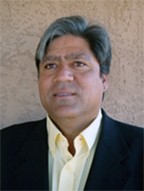
Roger Fragua has dedicated his professional career to the advancement and development of American Indian communities. He is currently the President of Cota Holdings, LLC, and NDN Energy, LLC, whose mission is to support Tribal community and economic development in the energy sector. Cota focuses on Tribal development projects and efforts of energy companies within Indian Country. Previously, Roger served as Deputy Director of the Council of Energy Resource Tribes and where he worked with leaders of the 47 federally recognized Tribes and four Canadian First Nations to dramatically restructure federal-Indian relations concerning minerals, mining, taxation, and Tribal jurisdiction over environmental regulations on Indian lands. Roger also worked for the Enron Corporation in Houston, Texas, where he created innovative business concepts and promoted partnerships between Tribes and Enron. Roger has worked with the Western Governors’ Association and the National Tribal Environmental Council on State and Tribal relations as it relates to environmental issues. The basis for Roger’s commitment to Indian Country is steeped in his life-long tenure as member of the Jemez Pueblo in New Mexico where he has served as Tribal Administrator.
II-2: Indian Country and Access to Energy & Water
Indian Country is legally defined as the 577 Federally recognized American Indian Tribes that are located across 33 States in the U.S. with 2.5M American Indians growing at 4% per year or doubling every 20 years. The Tribes act as both sovereign governments and business units that are concerned about the health, wellness and wellbeing of its’ Tribal members. Having access to reliable, affordable and accessible resources are paramount for Tribal Leadership.
=
Jayla Poppleton

Jayla Poppleton is the Executive Director of Water Education Colorado. Previously, she oversaw print and digital content programming and served 9 years as the editor for Headwaters magazine, Water Education Colorado’s flagship publication. Throughout her career, Jayla has focused on communicating important science and policy issues through a human-interest lens. She has written extensively on all aspects of Colorado water, and it continues to be the subject she is most passionate about. Jayla serves on the Advisory Committees for TAP-IN Colorado, and for the One World One Water Center at Metro State University. Hailing from the outskirts of Chicago, Jayla was drawn to beautiful Colorado, where she earned a bachelor’s degree from Colorado State University in technical journalism specializing in natural resources management. She fell in love with Colorado’s rivers while guiding commercial rafts down the Cache la Poudre River, and now lives in Denver with her husband and three sons.
II-3: Mounting pressures on food producers in a headwaters state
Water issues are fundamentally critical to every aspect of Coloradan lives and livelihoods. Nowhere is that more true than for agricultural water, where 86 percent of the state’s water supplies are used and where pressure grows every day from drought, climate change and competition from growing urban communities. Farmers and ranchers are working proactively and collaboratively with other stakeholders to figure out how to maintain their ability to grow food, while using the resource more efficiently and entering creative arrangements to help preserve streams and share water with metro areas. This work is happening within the context of Colorado’s role as the headwater for four major watersheds that collectively provide water to tens of millions of people in 19 states and Mexico. Everything we do here has an effect downstream and being the “water tower” of the West comes with responsibilities and limitations.
=
Luke Runyon

Luke Runyon is a reporter covering the Colorado River Basin for public radio station KUNC in Greeley, CO. His investigations show how water issues can both unite and divide communities throughout the Western U.S. Luke produces feature stories for KUNC and a network of public media stations in Colorado, Utah, Wyoming, New Mexico, Kansas, Arizona, California and Nevada. Before covering water at KUNC, Luke covered the agriculture and food beat for five years as the station’s Harvest Public Media reporter. He has also reported for Aspen Public Radio in Aspen, Colo. and Illinois Public Radio in Springfield, Ill. His reports have been featured on NPR’s Morning Edition, All Things Considered, Weekend Edition, Here & Now and APM’s Marketplace. He’s a graduate of the University of Illinois’ Public Affairs Reporting program. Luke’s work has been recognized by the Society of Environmental Journalists, Radio Television Digital News Association, the Colorado Broadcasters Association and the Public Media Journalists Association.
II-4: Uniting and Dividing: How Water Can Bring Western Communities Together or Drive Them Apart
Conflict among water users is nothing new in the West. But for as many stories there are about people coming to blows over the resource, there are just as many about strange bedfellows working on interesting solutions and forming unique coalitions. That’s true today, where water scarcity is driving a fair amount of conflict, but collaboration as well, as people try to figure out how to live with less.
=
Part III: Technology Addressing Current Challenges:
Tuesday, August 18, 2020 (10:00 –11:30 am)
=
Thomas Cech

Thomas Cech currently serves as the Co-Director of the One World One Water (OWOW) Center for Urban Water Education and Stewardship at Metro State University, Denver. Tom was born and raised on a farm near Clarkson, Nebraska, graduated from Kearney State College with a Bachelor of Science Degree in Math Education, and later received a master’s degree in Community and Regional Planning from the University of Nebraska – Lincoln. He has served as the Executive Director of the Central Colorado Water Conservancy District in Greeley and has taught undergraduate- and graduate-level courses in water resources at the University of Northern Colorado and Colorado State University.
III-1: Technology Addressing Current Challenges: The Importance of Water Education
Population growth and climate change present challenges to maintain adequate water supplies while also protecting our environment. Technology can help mitigate some issues, but people need to understand and trust the basic science involved in protecting their drinking water, management of watersheds, and environmental protection. What can we do, as scientists, government officials, and academics, to improve and enhance the understanding of the delicate balance between energy development and consumption, and the preservation of limited water resources?
=
Christy Woodward
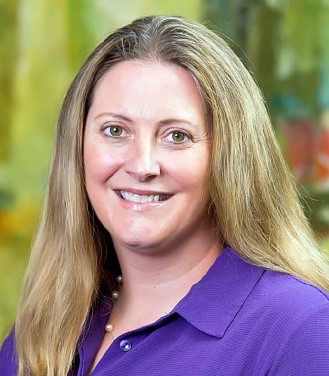
Christy Woodward serves as the Senior Director of Regulatory Affairs for the Colorado Oil & Gas Association. She leads COGA’s regulatory strategy. Ms. Woodward has 19 years’ experience in civil and environmental engineering design and project management, including Clean Water and Clean Air Act permitting and compliance as well as Wildlife and Cultural assessments for energy projects on Federal Lands. She is an Environmental Engineer who has provided technical support for the oil and gas industry, the homebuilding industry, mining industry, other private clients, U.S. Environmental Protection Agency and the Department of Defense. Ms. Woodward’s technical experience includes regulatory compliance, permitting, and agency negotiation; planning and implementation of surface and subsurface investigations and remedial evaluations; remedial design and implementation; design and implementation of hydrogeological, hydrological, and sedimentation studies; watershed management projects; and stormwater control projects.
III-2: Innovation and Adaptation in Colorado’s Oil and Natural Gas Industry
For several years, housing expansion and development in the Denver-Julesburg Basin and other critical areas around the State has resulted in a rift between neighboring communities and the oil-and-gas industry (OGI) caused by much confusion and fear accompanying a plethora of misinformation. This has generated mistrust amongst critical stakeholders. The OGI is incredibly technical and innovative, allowing it to thoughtfully and carefully mitigate of a variety of concerns. However, it doesn’t always communicate effectively and can be slow to respond in meaningful ways. As an Environmental Engineer who now focuses on rulemaking, I have a unique opportunity to foster these innovations and adaptations within our member companies and explain to the public how local communities in Colorado are provided with the cleanest molecules of energy in a truly sustainable way. It’s “Tank to Table Energy” that will serve our society well into the future.
=
Tracy Kosloff
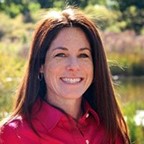
Tracy Kosloff is Deputy State Engineer with the Colorado Division of Water Resources. She holds bachelor’s and master’s degrees in Engineering from UCLA. She worked as a consulting engineer in the water supply planning field before joining the Colorado Division of Water Resources in 2010. Ms. Kosloff originally focused on water supply regulation in the South Platte River Basin and Colorado’s eastern plains but now holds a statewide role dealing with Well Permitting, Surface Water Use Approvals, State Legislation, Water Law, and whatever else is necessary.
III-3: More Information About Water Diversions Faster Makes for Better Decisions
As part of the Colorado Department of Natural Resources, the Division of Water Resources (DWR) has the responsibilities of maintaining water diversion records and instructing water users to shut off diversions when there is not enough water to go around. DWR is improving these functions by continuously adding remote sensing stations that provide real-time data, and making water data available through mapping, graphing and bulk-data download as tools to help decision makers. The data shows that 90 percent of water diversions in Colorado are used to supply irrigation and municipal uses, while industrial diversions, including those related to energy production, are less than 1 percent of diversions.
=
Seth Haines, PhD
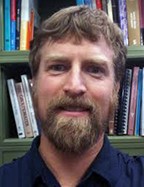
Dr. Seth Haines is a Research Geophysicist with the USGS Central Energy Resources Science Center in Denver. His areas of work include characterizing gas hydrate resources using seismic and other geophysical methods and quantifying the potential effects of oil and gas development on water resources and wildlife habitat. This work includes analysis of data related to hydraulic fracturing and water production as well as linking of those observed water trends with USGS assessments of oil and gas resources. Prior to relocating to Colorado, Seth grew up in rural Maine. He received a BA in Geology and Physics at Middlebury College in Vermont, and an MS and PhD in Geophysics from Stanford University.
III-4: Water Use and Production Associated with Oil and Gas Development: Understanding Volumes and Trends to Make Informed Decisions
Strong opinions often dominate discussions of the role of water in oil and gas development rather than hard data. By studying trends in oil-and-gas-related water use (mainly for hydraulic fracturing) and water production, we can gain insight into the considerable variability in both categories of water volumes across both space and time. We can also consider how these volumes relate to the broader hydrologic system in a given area. I suggest that these sorts of analyses can support decision making that allow mitigation of conflicts and result in informed resource planning.
=
Part IV: Future Pathways:
Thursday, August 20, 2020 (10:00 –11:30 am)
=
Elizabeth Garner
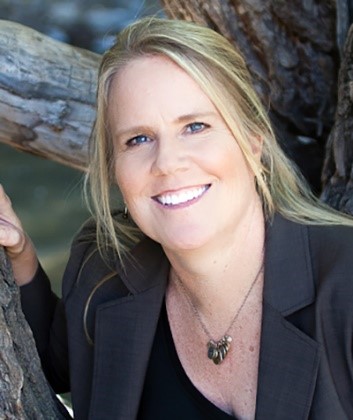
Elizabeth Garner is the Colorado State Demographer with the Department of Local Affairs, an agency focused on strengthening the capacity of Colorado’s communities and local governments. She leads the State Demography Office, which produces population and economic estimates and forecasts for use by state agencies and local governments. Elizabeth has over 25 years of experience analyzing population and economic trends in the state, and her current areas of research include aging in Colorado, characteristics of migration, and poverty. Elizabeth is an economist and received her B.A. in Business at the University of San Diego, her masters in Agricultural and Resource Economics at Colorado State University. She is also a Colorado native, something only 43% of the state’s current population can claim.
IV-1: Where Do We Grow from Here?
Population growth throughout the state of Colorado has varied over the last decade. There are demographic, economic, and political shifts taking place that will slow growth in the U.S. and in Colorado. It is important to understand what is driving population growth and where it is likely to occur in order to successfully plan for the future. The State Demography Office creates population forecasts and associated components by age and by county through the year 2050. These can be used to develop scenarios and plans for resource use across the state.
=
Russ Sands

Russ Sands has worked in the water industry for 15 years. His career has included time spent ensuring water quality for Denver Water, managing water conservation and stormwater programs for the City of Boulder, and working as a consultant on climate, resilience and water issues. As the Section Chief for the Colorado Water Conservation Board (CWCB), Russ works with stakeholders across the state on local and regional water challenges. Russ is currently working with leaders from each of Colorado’s major river basins to update local and state analysis that will feed into the update to the Colorado Water Plan.
IV-2: The Colorado Water Plan: Where We’ve Been and the Path Forward
The 2002-2003 drought created a renewed drive for understanding water needs in the State of Colorado and led to the development of many water-planning efforts. Ultimately, those efforts led to the creation of the Colorado Water Plan (Water Plan). This year, the Water Plan celebrates its 5th anniversary just as the State and countless stakeholders across Colorado are involved in updating many aspects of the Plan. From incorporating the effects of climate change and scenario planning, to evaluation of observed trends and recognizing where better data are required, understanding our future water needs has never been more important.
=
Peter Barkmann
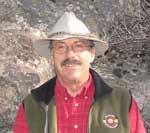
Peter Barkmann is a Senior Hydrologist at the Colorado Geological Survey (CGS) where he conducts regional water resource investigations, environmental assessments, and manages the groundwater resources program. Prior to joining the CGS in 2002, Peter helped a local consulting firm assess hydrogeological characteristics of the Denver Basin aquifers and oversaw the design and installation of production-water wells for municipal water providers in the basin. At CGS, he has worked to decipher the 3D stratigraphic architecture of this important aquifer system and was principal investigator and lead author of the CGS report Cross-sections of the fresh-water strata of the Denver Basin. He is co-author on numerous CGS maps and reports, including the award-winning Ground Water Atlas of Colorado (2003). Recently, he has led the effort to update the Atlas to an entirely web-based format and has coordinated development of a statewide Abandoned Mined Land inventory data hub. Peter holds a Bachelor of Science Degree in Geology from Western Washington University and a Master of Science Degree in Geology from the University of Montana.
IV-3: Groundwater Resources in Colorado: An Online Atlas
Over-appropriation of surface-water resources, combined with increased demand and a lack of new storage reservoirs, has directed attention to Colorado’s groundwater, which currently supplies ~18% of the State’s freshwater needs. Groundwater is also tied to many energy resources and policy issues. Geologic formations may be aquifers near the surface but oil and gas reservoirs at depth, or may host uranium deposits. Groundwater is used and produced as part of normal oil and gas operations, removed from coalbeds to produce methane, or pumped to allow mining. Assessment of groundwater resources is an important task for the Colorado Geological Survey, the State’s non-regulatory source for groundwater information. A recently completed revision of their 2003 Groundwater Atlas of Colorado is now available online to a wide public audience. The Atlas adds new data and revises information based on expanding scientific knowledge of Colorado’s complex hydrogeologic setting.
=
Jordan Macknick
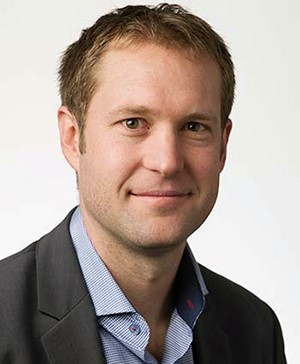
Jordan Macknick is the Lead Energy-Water-Land Analyst for the National Renewable Energy Laboratory. He is a member of the Strategic Energy Analysis Center’s Systems Modeling team within the Resources and Sustainability Group. Jordan’s primary work addresses the environmental impacts of energy technologies, while seeking opportunities for energy and ecological synergies. In his energy-water-land leadership capacity, Jordan analyzes national and regional implications of different energy pathways in the context of water and land resources, evaluates opportunities to improve the energy management of water infrastructure, and explores innovative approaches to co-locating solar and agricultural activities. Jordan received his BA in Mathematics and Environmental Studies from Hamline University in 2005, and his Master of Environmental Science degree in Transboundary Natural Resource Policy from Yale in 2009. Jordan’s areas of expertise include systems modeling of energy and water infrastructure interactions, renewable-powered water treatment systems, meta-analysis of diverse data sets, and low-impact renewable energy development.
IV-4: Transformation of Colorado’s Energy Sector
The energy sector is closely integrated with other sectors of the economy and society. As innovations lead to changes in individual energy technologies and broader energy systems, other parts of society will co-evolve, leading to new challenges and opportunities. The National Renewable Energy Laboratory (NREL) is at the forefront of developing new energy-efficiency, energy-generating, and energy-storage technologies that could drastically alter the nation’s and the state’s energy sectors. These advancements are closely tied to the changing needs of the agricultural, mining, manufacturing, buildings, water treatment, and transportation sectors. Systems-level perspectives can help us better understand how technological innovations can be best integrated into existing infrastructure, or when more significant transformations are necessary.
=
Mark Jensen, PhD
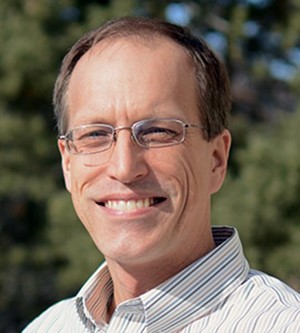
Dr. Mark Jensen is a Professor of Chemistry and the Jerry and Tina Grandey University Chair in Nuclear Science and Engineering at Colorado School of Mines. Mark’s research interests are focused on the nuclear fuel cycle, ranging from mechanisms of selectivity in chemical separations to biologically based metal separations and the biochemistry and environmental chemistry of the transuranium elements. Prior to his appointment at Mines, Mark has studied the chemistry of the actinide and lanthanide elements as a scientist in the Heavy Element Chemistry and Separation Science Group at Argonne National Laboratory for twenty years. He received his Ph.D. in Inorganic and Nuclear Chemistry from Florida State University after which he had a postdoctoral position at DOE’s Argonne National Laboratory.
IV-5: Is There a Future for Nuclear Energy in The Mountain West?
The lifecycle greenhouse gas emissions of nuclear energy are among the lowest of any energy source. However, the current commercial model for electricity generation with nuclear energy is based on gigawatt-scale, multi-billion-dollar plants that take a decade to build and are only economically competitive in certain markets. A new generation of smaller nuclear plants is currently being licensed by the NRC and construction and testing are expected to begin in the next few years. Could the advantages of these new reactor designs make them important in a low carbon energy future for Mountain West states like Colorado?



















